Read Our Blogs
How to be prepared outdoors when severe weather happens
Camping and hiking are fun recreational activities on any regular day, but do you know how to stay safe when severe weather happens? Here are some safety tips that can help save your life if you encounter bad weather during your travels.
5 tips for staying safe while out hiking or enjoying a camping trip
1. Be weather aware
First, you will need to be weather aware, and by that, I mean you need to pack and dress for the forecasted weather. The day can cool down quickly in some of our mountain parks and it can heat up quickly in some of our beach parks. Look at both the daytime and nighttime temperatures as warm, sunny days can turn into frosty, cold nights. Familiarize yourself with the day and night temperatures and pack accordingly.
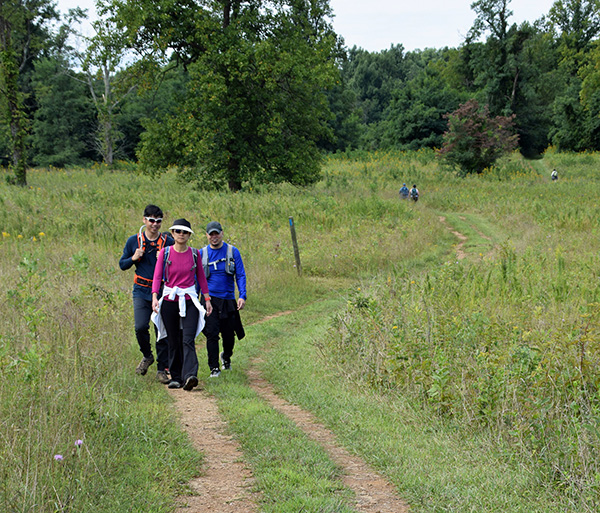
Wear long pants and long sleeves when hiking to protect yourself from ticks and other insects.
Weather changes happen fast and can vary from predictions so being prepared with the right attire is very helpful. Be sure to check a weather app or an online weather website and use the park's zip code, not the city for the most accurate forecast. Being prepared for the weather is easier when you know the weather forecast for the area and at the park location.
2. Have an emergency kit
Second, have emergency items packed. These items include a first aid kit, blanket, sunscreen, a whistle, flashlight and batteries.
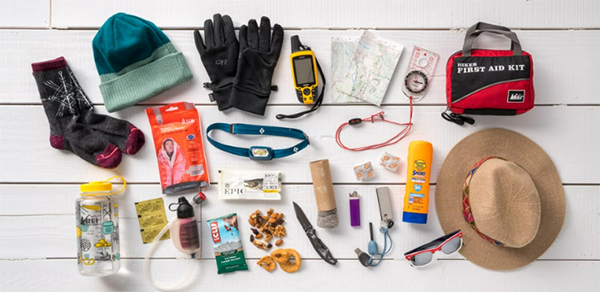
A hiking kit is essential - courtesy REI 10 Essentials for Hiking and Camping
We recommend you carry a small first aid kit in your hiking pack and have a larger one in the vehicle. It is better to have it and not use it than to not have one at all. Have sunscreen readily available, even if it’s a small amount, and be sure to keep it in your pack with you. Remember to apply sunscreen often, even on cloudy days and even when hiking under a dense tree canopy. This can help your skin stay hydrated and protect it against sun rays regardless of whether it’s a cloudy day.
Keep a small flashlight, glow sticks and a whistle in your hiking pack. Be sure to have extra batteries for your flashlight. Most parks have camp stores or a visitor center and should have these available to purchase but be sure to do this before setting up your campsite. Flashlights and glow sticks will help illuminate the area for your safety and can be helpful if others need to locate you in bad weather. A whistle will loudly alert others that help is needed and will function as an additional useful tool to locate you.
3. Bring snacks and water
Third, keep snacks and water in your hiking pack. Carry a refillable water bottle or two and refill them often. Most public spaces have refillable water stations, or you can check the camp store and purchase water. It is super important to keep yourself hydrated, especially if you are traveling with small children or pets. You can help yourself and others to safety much easier if you stay hydrated. Remember that soda, coffee and sugary juices do not hydrate your body like water does.
4. Know your route
Fourth, know your route before you hike and familiarize yourself with the campground and campsite before you set up. This is very important and will be even more useful if you need to move quickly in severe weather.
Bring a trail map with you or download the map to your cell phone before going on a hike. When trekking through the woods, it is important to know the route and the number of miles you'll be covering. Jot down the list of emergency numbers at the trailhead kiosk and be sure you know where available help can be located.
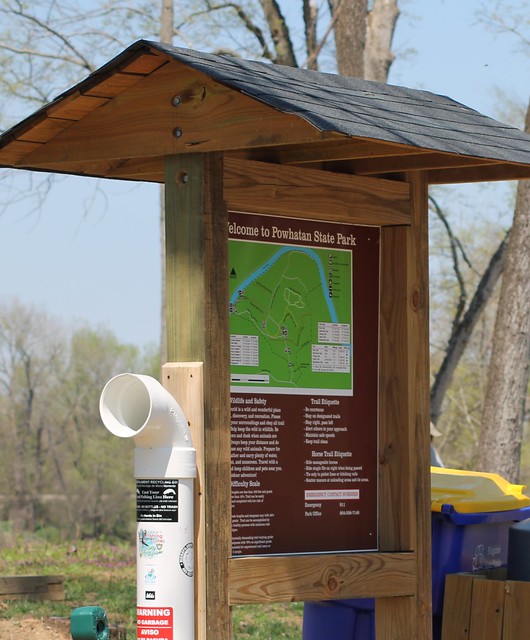
Trailhead kiosks have emergency phone numbers and information. Take a picture of it on your phone or jot down the phone numbers before you head out on the trail.
Knowing where the local hospital is located, and how to get there could save precious time. Be sure to research where you would go if severe weather hits while camping or hiking. Having a plan before your trip will save so much time when you need it the most.
5. Practice fire safety
Fifth, be sure to only light campfires in designated fire rings and keep the fire under control at all times. On windy days, build smaller fires and do not leave fires unattended. You don’t want to add fire hazards to an already severe thunderstorm situation. Fires can be prevented when all safety precautions are followed.
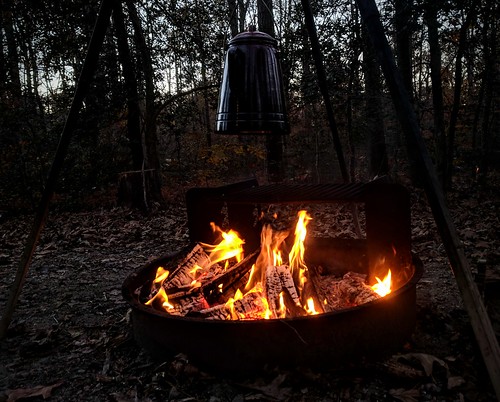
Keep campfires within the fire ring.
Thunderstorms are here, now what?
You can always stay in the know and be safe by making sure that your cell phone gets weather notifications for storms and tornado warnings. Did you know that most campground bathhouses double as storm shelters? Therefore, it’s very important to familiarize yourself with the park surroundings before setting up or partaking on any outdoor adventure.
When you know a storm is coming and hear on your emergency weather radio that one is on the way, you need to prepare. There are several safety precautions you can take to get through the storm more safely.

First, get to lower ground, especially if you’re above the tree line or on a ridge line. You may need to relocate your tent if it’s not in a lighting-safe place.
Since lightning takes the path that gets it to the ground the fastest, the tallest things become conductive and are the most likely to get struck. A lightning-safe space consists of some cover, but not under the tallest trees in the area.
Next, you will need to make sure that your tent’s guy lines and stakes are secure. If the weather is severe and you must relocate your tent, you need to make certain that you set it back up securely. Thunderstorms produce downburst winds that are strong and fast, and these winds can exceed over 100 miles per hour. Use every guy line you have and make sure that your rain fly is taut for the best protection from the elements.
Third, try to get your rain gear on before the rain gets there as this will increase your chances of staying dry. Thunderstorms can intensify quickly and go from a light preceding rain to a downpour in minutes. If you see lightning, avoid touching metal objects like door handles during the storm.
When the lightning and thunder are very close to each other, that means the storm is dangerously close. If you have the option, go to a safe shelter. It’s best to get to a safe shelter BEFORE the storm is overhead. If you are in a camper and there are tornado warnings, it’s imperative to get out of the camper and seek shelter.
Safe shelters include:
- Your car: Cars (not convertibles) are safer than tents. During a thunderstorm, your car acts like a Faraday cage. This means electricity passes around the outside of your vehicle, shielding electromagnetic fields from getting to the people inside. Be sure to keep your hands in your lap and avoid touching the metal door handles.
- A nearby building with electric or plumbing: Most parks have campground bathhouses, and they are an ideal place to seek shelter during a storm.
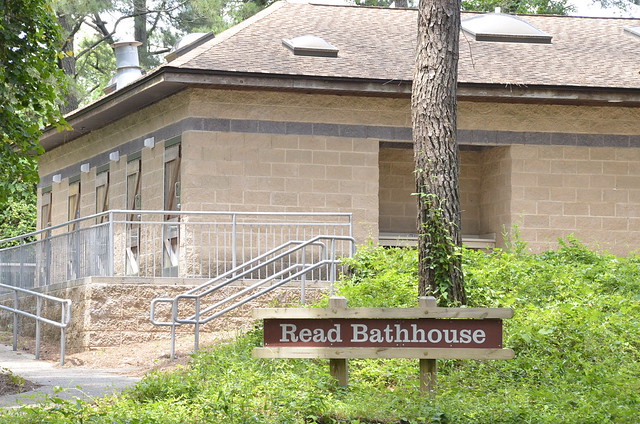
A bathhouse is a safe place to shelter during a storm.
Finally, remember to stay in your safe shelter for 30 minutes or until you can’t hear the thunder anymore. Statistics show that 1/3 of lightning fatalities occur because people leave their shelters too soon. Stay in place, stay calm and wait for the storm to pass.
Also note that it is helpful to let a friend or family member know when and where you are planning to hike and camp, especially during months where severe weather is most likely to occur.
Following these safety tips will help prepare you with the proper tools needed to protect yourself when severe weather hits. Stay safe, be prepared and keep exploring.
For more tips on how to stay safe when you are outdoors and severe weather hits, visit: https://hikingandfishing.com/camping-in-a-thunderstorm
If you have read the article and have a question, please email nancy.heltman@dcr.virginia.gov.














